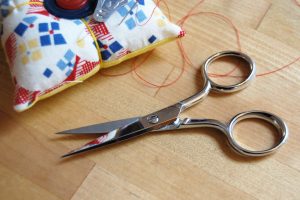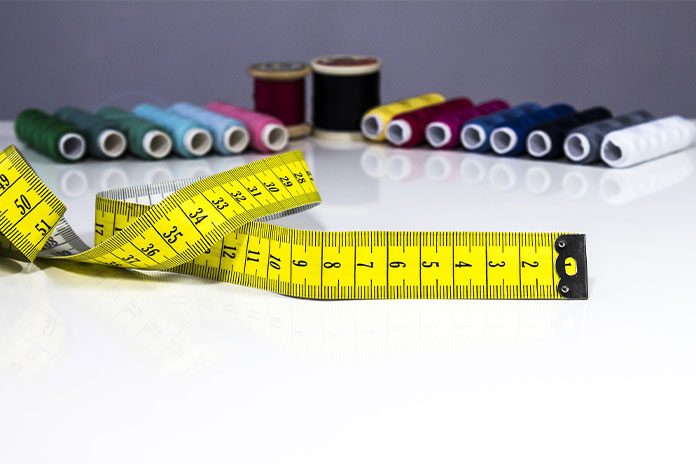Sewing tools for beginners someone who’s just beginning the journey in sewing, it might be overwhelming to look at recommended must-have sewing tools in your collection. It’s important to only get the essentials when you’re just beginning to sew. Don’t get sucked in by buying tools that you will rarely get a use out of.
Sewing is a fun skill to learn. In no time, you can work on more complicated projects by practicing. By following a consolidated list and guide created by Mollie, you’re on the right track in your journey in learning sewing tools as a begginers.

Hand Sewing tools for Beginners Must-Haves
If you plan to begin your sewing journey by doing it by hand, you’re in for a treat. Hand sewing doesn’t require a lot of complicated tools.
1. Hand sewing needles
Hand sewing needles are definitely a must-have for anyone, not just sewers. They are identified with a number – the higher the number, the smaller the needle. For instance, a 16 needle is smaller than a 7 needle. This is important because different types of fabrics require different needle sizes to avoid unwanted holes. Moreover, it also depends on the thread’s thickness.
2. Hand sewing thread
When it comes to thread, quality is better than quantity. Plenty of thread brands offer a thread set that comes in different commonly used colors. Make sure you’re getting threads that strong and less resistant to fraying. Some cheaper, poorly-made threads break off easily which could be annoying and inefficient.
3. Thimble
Thimbles are a must-have for dedicated hand sewers. It protects your finger whenever you push a needle through the fabric. If you’ve tried sewing by hand without a thimble, you know how painful it is to push the needle in and out of the fabric especially if it is thick.
Thimbles come in different materials (plastic, metal), sizes, and colors. You will definitely thank yourself in the future for keeping a thimble in your sewing kit. what are the essential sewing tools for beginners
4. Needle Threader
While some people can easily put a thread into the eye of a tiny needle, others find it difficult, especially those who are nearsighted. Needle threaders are tiny but powerful tools that help you do this task with no hassle. It is a must-have in your sewing kit if you’re fond of hand sewing.
5. Pins
Don’t you just hate it when you’ve finally finished sewing and realized you’ve gone in a slanted direction? To sew in a straight line, you will definitely need some pins. Before sewing, you should pin the fabrics together first. It’s mainly used to secure fabrics together temporarily.
Just like with hand sewing needles, pins come in different sizes depending on the type of fabric you’re going to work with. These pins come in fun different colors, too!
6. Pincushion
While you can always store your needles, pins, and other sharp objects inside a metal or carton box, pincushions are a much more efficient and organized way to store them. Plus, they are a much safer way to store sharps and less prone to falling on the floor.
7. Seam Ripper
Everybody makes mistakes. It’s especially common for beginners. No worries! Seam rippers are there to help you remove your stitches. A seam ripper is a small tool that is made of a plastic handle and a metal end. The end has a curved sharp end and a red ball.
You might be wondering why you need to have a separate tool for ripping seams. Why can’t you just use a pair of regular scissors? If you’ve tried doing it, you know how difficult it is to cut each stitch with the large blades of scissors. It takes a long time to do so with scissors. With a seam ripper, you can easily slip under the stitches and snip quickly.

sewing tools and equipment for beginners
A sewing machine is one of the most powerful sewing tools you can own. You know how much fatigue hand sewing does to your hands, sometimes. And it’s there to help speed up the process with a more seamless and precise output.
8. Sewing Machine
Sewing machines are one of the best investments to have that will pay you in the long run. You could get very creative and productive with a simple machine such as this. If you want to begin sewing but don’t want to do it manually, this is the best option. It allows you to sew in uniform, straight seams much quicker than by hand.
A sewing machine seam guide is helpful if you’re just a beginner in machine sewing. There are different types of seam guide – throat plate guide, magnetic seam guide, and an adhesive seam guide.
9. Sewing Machine Manual
If you’ve recently received a sewing machine as a gift or you just recently purchased one to start sewing, you obviously want to get your hands on it and start sewing fabrics together. However, it’s important not to rush the process to avoid damaging your precious machine.
Prior to using the sewing machine, make sure to read the manual first. This is so you know the basics of operating the machine. It also gives you information about the wattage and voltage of the machine to make sure you’re plugging it in the right electrical socket. If you fail to do so, it might damage your machine permanently.
Additionally, sewing machine manuals offer you some tips on how to perform basic stitches. This will give you a kickstart in your sewing machine journey.
10. Sewing Machine Oil
If you own a new sewing machine, it will take a while before you actually need to lubricate your sewing machine. However, if you own a second-hand or old sewing machine, it might be good to lubricate the machine’s gears for smoother sewing.
11. Sewing Machine Needles
Whether your machine is new or used, it’s a good choice to start with fresh sewing machine needles. In general, needle sizes are decided based on the fabric’s weight. The heavier the fabric, the larger the needle size.
There are also different types of sewing machine needles available. Universal needles are the most commonly used. It’s ideal for woven fabrics and knits. Meanwhile, Ballpoint needles are mostly used in fabrics like jersey to avoid damaging the fabrics.
Denim needles are specially made for sewing denim or jeans and other similar heavy woven fabric types. Leather fabrics also require special needles – leather needles. Their pointed ends are chiseled to cut through the leather. For stretchy fabrics like spandex, suede, and other elastic fabrics, Stretch needles are the ideal needle.

Sizes for sewing machine needles are slightly different from hand sewing needles. On the needle’s packaging, you will typically see two numbers – European and American sizes. For example, 100/16 indicates the needle’s European size is 100, and its American size is 16.
American sizes 8-10 are usually meant for sewing delicate fabrics such as silk and lace. Needles 11-12 are usually for lightweight fabrics like cotton. For moderate weight fabrics such as linen, fleece, and velvet, Needle 13 is usually appropriate. Sizes 16-19 are best for heavyweight fabrics such as denim, canvas, and leather. Lastly, the biggest sizes of 20 and 21 are reserved for the heaviest fabrics Best swing machine for beginners.
Sewing for Beginners Fabric Library
12. Fabric Shears
Nobody likes a dull pair of scissors, especially when cutting through fabrics. Fabric shears are arguably the most essential tool in your kit. It’s essential especially if you’re working with delicate and expensive fabric.
Fabric shears are typically 8” in length. Before buying a pair of fabric shears, make sure to get a feel of the shears for yourself to ensure you’re buying a comfortable style. You may also buy longer fabric shears if you plan on cutting longer fabrics. This is more convenient and faster to use.
Well-made, high-quality shears can get expensive. Make sure to take care of them properly by storing them in a box or case. Keep then clean and stain free. Never use them for cutting other objects such as paper as it will dull its sharp blades.
13. Spring-action Dressmaker Shears
These shears are a lot similar to usual fabric shears. However, its spring-action makes it much easier to cut through fabrics. The spring opens the blades after each cut, reducing hand fatigue. It’s ideal for those with joint problems such as arthritis, and carpal tunnel syndrome. It’s also great if you just want an effortless cut.
14. Craft Shears
When sewing, it’s not only fabric that you need to cut through. You may also need to cut paper, carton, or other materials. Keep a spare pair of craft shears or scissors in your kit. Remember that your fabric shears are only exclusive to your fabric. Never use them on other materials.
15. Pinking Shears
Pinking shears are a lot similar to normal shears except that their blades are sawtooth or zigzag instead of straight like a typical pair of shears. They are typically used on woven cloth to prevent edges of cut fabric from fraying. When a normal pair of scissors is used, threads may become loose and pull out easily.
16. Rotary Cutting Tools
Ever wonder how a seamstress cuts through fabrics so perfectly? Rotary cutters have some role to play. It allows you to cut perfect squares on fabrics. It’s truly essential if you plan on cutting patches for quilting.
A basic 45 mm rotary cutter is enough to have as a beginner. It’s a lot like a pizza cutter. It comes with a circular blade and a handle. Most come in different designs and handles. Choose the one that’s most comfortable to hold for you. Remember to always use the cutter with caution as the cutter has an extremely sharp blade. It’s what makes it great!
With rotary cutting, you will also need a cutting mat. These mats typically have a measuring tool printed on them to assist you with creating the perfect cut.
17. Rulers
A simple clear 6” x 24” ruler is essential when you’re measuring fabrics to cut. Together with a cutting mat, you can easily create accurate and straight cuts on fabric easily.
You may keep a yardstick in your sewing tools which is great for measuring long fabrics before cutting them.
18. Tape Measure
A basic 60” tape measure with two sides – centimeters and inches is a must-have in your kit. These are very cheap and last a long time. They’re basically a ruler but in flexible form. They are ideal for taking body measurements or measuring circumferences.
19. Tracing Wheels
If you’re looking into using patterns to create your project, a tracing wheel is a right tool for you. This tool transfers the patterns to your fabric accurately Best fabrics machine .
20. Marking Tools
A tailor’s chalk is one of the most popular marking tools for sewers. Manufacturers have become creative in designing them in the past few years. They come in various colors, shapes, and sizes. They are mostly used to mark patterns on your fabric before sewing.
Although most tailor’s chalks are designed to rub off easily, some less well-made varieties might not be as easy to remove. Test it on the spare fabric first before making a huge pattern on your fabric.
A fancier version of the tailor’s chalk is the disappearing ink. They are water-soluble ink that evaporates after a short time. If you want to remove them instantly, just rub off some water on the fabric.
You may also get some fabric marking pencils for more precise marking on your fabrics. Get a light-colored pencil for darker fabrics, and a dark-colored pencil for lighter fabrics.
21. Pressing Tools
Ironing or pressing your fabric is key to sewing smoothly. You don’t want to end up ruining patterns on your fabric because your fabric was wrinkled when you measured it.
You simply need an iron and an iron board to get started on pressing your fabrics. Don’t forget to match the heat setting of the iron to the fabric you’re working with. If possible, you can iron a test or scrap fabric first to make sure things will go smoothly. Some sewers go for a steam iron as it is less prone to burn or stain your clothes with it.
Sewing is indeed a fun, relaxing hobby that always comes in handy. With the right practice, you can begin sewing fabrics and create impressive pieces. The list above is a helpful guide in choosing the first few sewing tools you should get to start sewing. In honing any craft, patience, consistency, and creativity are much needed. Sewing is definitely a good skill to learn to help you spruce up your home.
Don’t forget to check out more posts from Mollie Johanson about sewing tips and more!




